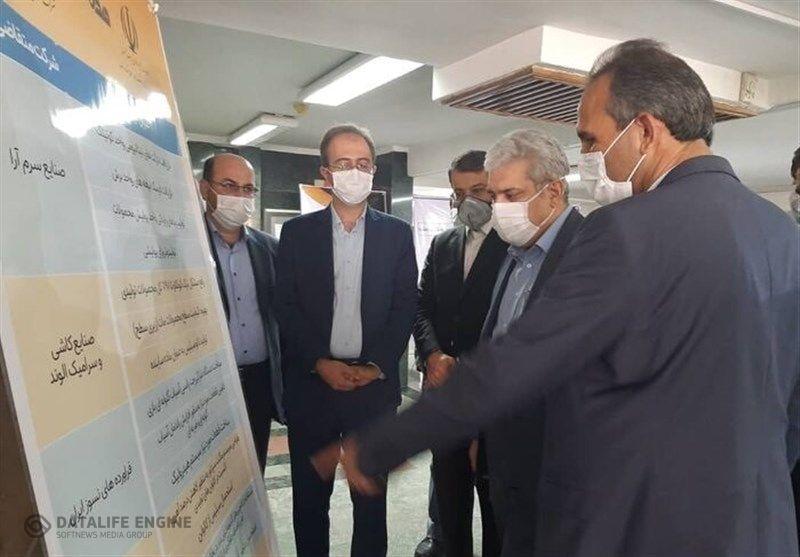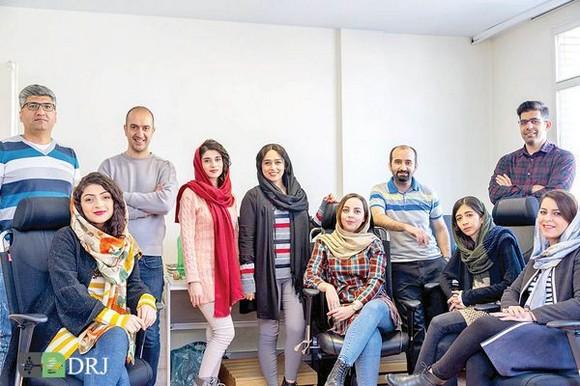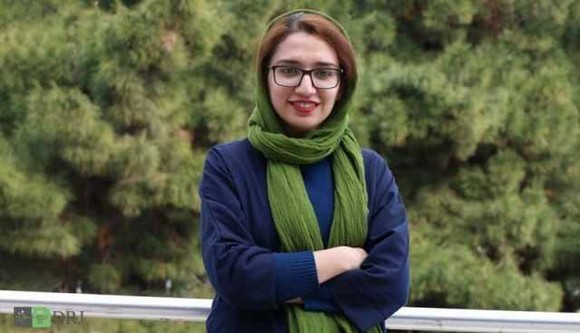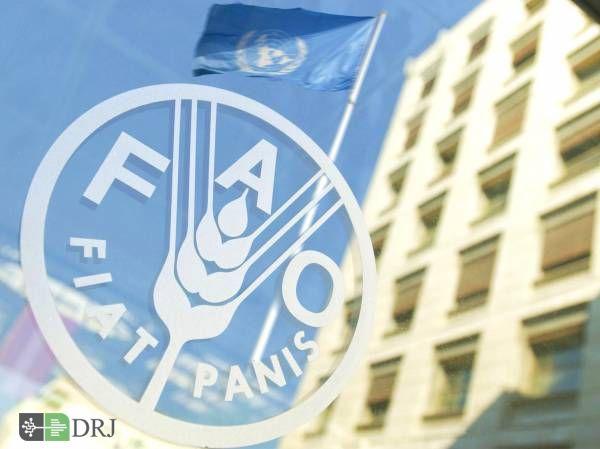Sayyid Ahmad Khan
Born in the twilight of the Mughal Era in the Indian subcontinent to a distinguished family , Sayyid Ahmad Khan is the eldest of the five prominent Muslim modernists whose influence on Islamic thought and polity was to shape and define Muslim responses to modernism in the latter half of the nineteenth century . Like the four--Sayyid Amîr cAlî ( 1849-1928 ) , Jamâl al-Dîn al-Afghânî ( 1838-1897 ) , Nâmik Kemâl ( 1840-1888 ) and Shaykh Muhammad cAbduh ( ca . 1850-1905 )--Sayyid Ahmad Khan was deeply concerned with the state of Muslims in a world dominated by European colonizing powers .
Sayyid Ahmad Khan’s forefathers claimed direct blood relationship with the Prophet of Islam through his daughter Fâtimah and son-in-law cAlî . They had migrated to Iran , then to Herat in Afghanistan and finally to Shahjahân Abâd , which the Mughal Emperor Shah Jahân had built in 1648 near old Delhi . Ahmad Khan’s father , Sayyid Muhammad Muttaqî , and mother , cAziz al-Nisa , were both endowed with great intellectual and spiritual qualities . cAziz al-Nisa was the oldest daughter of Khwajah Farîd al-Din Ahmad ( 1747-1828 ) whose family had originally migrated to Kashmir from Hamadan in Iran . Khwajah cAbd al-Azîz , the grandfather of Khwajah Farid , finally settled in Delhi where the future father-in-law of Ahmad Khan was born in 1747 . The Khwajah family was a family of merchants while the Sayyid family belonged to the Mughal aristocracy . The great grandfather of Sayyid Muttaqi was a commanding office in Emperor Aurangzeb’s ( 1658-1707 ) army . Emperor cAlamgîr II ( 1754-1759 ) had bestowed the title of Jawâd cAli Khan and the rank of yak-hazari ( commander of one thousand ) on Sayyid Hadî , the father of Sayyid Muttaqî .
Ahmad Khan’s father , Sayyid Muttaqî , was mystically inclined and frequently visited the monastery of Shah Ghulam cAli . His income was derived from the agricultural land and the pension granted by the Mughal Court which , in those uncertain times , was rather irregular and much less than the promised amount . By the time of his marriage , Sayyid Muttaqî’s lofty ancestral house near Jamia Masjid in the prestigious northeast section of Delhi had become unsafe and unfit . He lacked the will and resources to restore it and after his marriage to cAziz al-Nisa , he moved in with his father-in-law who lived in a palatial mansion built by the famous architect Mehdi Qulî Khan .
It was in this palatial haveli ( mansion ) ¾ known as Haveli Mehdi Quli Khan ¾ that Sayyid Ahmad Khan was born on October 17 , 1817 . He was the third child of his parents . Two years before the birth of Ahmad Khan , his maternal grandfather , Khwajah Farîd , had been appointed the Prime Minister of Emperor Akbar Shah with the high sounding titles of Dabîr al-Mulk , Amîn al-Daulah , Maslah Jang . This was the crowning achievement in a career which had taken Khwaja Farîd to various parts of the crumbling Mughal Empire which was quickly losing its power to the British India Company . In 1781 , he had gone to Lucknow where he studied mathematics for three years with the famous scholar cAllama Taffadal Husain Khan who was also a munshi ( tutor-cum-clerk ) first to General Palmer and then to W . W . Hunter . He returned to Delhi to spend the next thirteen years but he was back in Lucknow in 1797 where he gained access to General Martin and other high-ranking British officials who recommended him to be the Superintendent of the Company’s newly established Calcutta Madressah ( Maddressah cAliyâh ) .
In Calcutta , Khwajah Farîd impressed Lord Wellesley with his diplomatic skills and was sent by him to Iran in 1803 as an attaché of the British Embassy . Khwajah Farîd had a specific mission: he was to convince Emperor Fateh cAli Shah of Iran to send another ambassador to India in place of Ambassador Haji Muhammad Khalîl Khan who had been “accidentally” killed by the Company’s soldiers on July 20 , 1802 . Khwajah Farîd was able to accomplish his mission and Muhammad Nabî Khan of Shiraz was appointed as the new ambassador of Iran to India . The Company promoted Khwajah Farîd to the position of Political Officer at the Court of Ava in Burma . After a few month’s stay in Burma , Khwaja Farîd returned to Calcutta and was appointed Tahsildâr ( revenue officer ) of the newly conquered territories in Bandiylkhand .
Once the British power was consolidated in that area , a permanent revenue officer was appointed and Khwajah Farid returned to Delhi in 1810 , which had been conquered by Lord Lake in 1803 . After a few months , he went back to Calcutta for about five years ( 1810-1815 ) before being appointed as the Prime Minister of the helpless Mughal Emperor Akbar II who drew his pension from the Company and who was under severe financial constraints . The Emperor expected Khwajah Farîd to obtain more money from the Company to pay his debts . Instead , Khwaja Farîd slashed the royal expenditures by reducing the allowances of the Salatîn , who numbered almost 3 , 000 and by abolishing the two royal kitchens that prepared lavish food for hundreds of court employees . This made him very unpopular in the Red Fort and eventually he resigned and left Delhi for Calcutta . The Emperor attempted to negotiate with the British for increase in his pension but realized that he could not do so without the intersession of the Company’s trusted and loyal friend , Khwajah Farîd . In 1819 , the helpless Emperor re-appointed seventy-two-year old Khwajah Farîd as his prime minister . He remained in that position for three years but when his authority was curtailed by the Emperor by associating Nawab Mîr Khan , Raja Kaydar Nath and Raja Sukh Ray with him as co-ministers , Khwajah Farîd resigned from his premiership in 1822 . Six years later , he died; at his death , Sayyid Ahmad Khan was eleven and his grandfather had already become the most important influence in his life .
The second most important influence on the life of young Sayyid Ahmad Khan was that of his mother , who is described as an exceptional woman . Her generosity and piety were legendary . When her eldest son died at the age of 38 , she “unrolled her prayer carpet and exclaimed: God’s Will was done . ”[i][i] She also urged her relative not to postpone the marriage plans of her daughter because of this death in the family . She maintained several helpless and indigent old ladies in specially built quarters adjoining her house and spent a great deal of money in charity .
In the Indian subcontinent Sayyid Ahmad Khan ( 1817-1898 ) and his followers were the first champions of this reform agenda . Born in the twilight of the Indian Tîmûrî era to a distinguished family , Sayyid Ahmad Khan was involved in a wide range of activities—from politics to education . He was to leave a deep mark on the new Islam and science discourse through his writings and by influencing at least two generations of Muslims who studied at the educational institutions he founded . [1]
It was during the decade of 1860s , that Ahmad Khan developed his ideas of a “modern Islam” and a Muslim polity living under the British rule . During this time , he wrote Târîkh Sarkashî-e Dilca Bijnore ( A History of Insurrection in Bijnor District ) and Asbâb-e Baghâwat-e Hind ( The Causes of Indian Mutiny ) . He sent 500 copies of the latter book to the India Office of the British Government in London and a personal copy to Lord Canning in Calcutta . The book was translated into English by Colonel Graham and Sir Auckland Colvin and published in Benares . In 1860-1861 , he published another tract , Risâlah Khair Khawahân Musalmanân: An Account of the Loyal Mahomdans of India , in which he claimed that the Indian Muslims were the most loyal subjects of the British Raj because of their kindred disposition and because of the principles of their religion . He also wrote a commentary on the Old and the New Testament , Tabîyyan al-kalâm fî’l- tafsîr al-tawrâ wa’l-injîl calâ millat al-islam ( The Mahomedan Commentary on the Bible ) . He attached a fatwâ ( religious decree ) by Jamâl ibn al-cAbd Allâh cUmar al-Hanfî , the Mufti of Makkah , at the end of the book . This fatwâ stated , “as long as some of the peculiar observances of Islam prevailed in [India] , it is Dâr al-Islam ( Land of Islam ) . ” This was to counter the religious decrees that had been issued by many Indian culamâ’ , stating that the Indian subcontinent had become a Dâr al-Harb , the land of war . This political overture was favorably received in the ruling circles .
The first two decades after 1857 witnessed Sayyid Ahmad Khan’s increasing preoccupation with the prevailing conditions of Muslims in India . He perceived Muslims as backward and in need of education . This period also saw an increasing degree of public involvement in educational and social arenas . On January 9 , 1864 , he convened the first meeting of the Scientific Society at Ghazipur . The meeting was attended , among others , by Ahmad Khan’s future biographer , Colonel Graham , who was convinced that India could benefit from England’s technological wealth . The Society was established with two clear objectives; two more objectives were added in 1867 . Thus the goals of the Society were:
( i ) to translate into such languages as may be in common use among the people those works on arts and sciences which , being in English or other European languages , are not intelligible to the natives; ( ii ) to search for and publish rare and valuable oriental works ( no religious work will come under the notice of the Society ); ( iii ) to publish , when the Society thinks it desirable , any [periodical] which may be calculated to improve the native mind; ( iv ) to have delivered in their meetings lectures on scientific or other useful subjects , illustrated when possible by scientific instruments . [2]
Ahmad Khan and the Society moved to Aligarh in 1867 where he was able to procure a piece of land from the government for experimental farming . The Duke of Argyll , who was also the Secretary of State for India , became the Patron of the Society and Lt . Governor of the N . W . Province its Vice-Patron . Ahmad Khan was the secretary of the Society as well as member of the Directing Council and the Executive Council . In a memorandum of the Society to its President , Ahmad Khan wrote , in May 24 , 1877 , that for several years “the Society has cultivated wheat and barley according to the methods prescribed in Scot Burn’s book on modern farming and showed the results to Talukdars ( estate holders ) of Aligarh; new instruments were used to cultivate corn by Burn’s methods; several vegetables were grown from newly developed European seeds and their seeds were distributed to farmers; the Society cultivated American cotton seeds , and demonstrated their superior product . ”[3]
Ahmad Khan now devoted all his energies and a portion of his personal income to the Society . He was also able to receive small sums from various Muslim and non-Muslim philanthropists . Ahmad Khan realized that the political realities of India dictated that Muslims should establish their own organizations . On May 10 , 1866 , he established The Aligarh British Indian Association . The inaugural session was held at the Aligarh office of the Scientific Society in the presence of a sizeable number of local landowners and a few European officers . The Association failed to achieve any degree of impact on the decisions of the government and , one after the other , its plans were aborted . Ahmad Khan wanted to establish a “vernacular university” for the N . W . Provinces but he was discouraged by the champions of Hindi who wanted such a university to teach in Hindi , rather than Urdu . In 1868 , the Association announced assistance for persons traveling to Europe for educational and scientific purposes but at that time , most Muslims of northern India considered social contacts with Englishmen undesirable for their moral and religious integrity . Ahmad Khan had been elected an honorary Fellow of the Royal Asiatic Society of London in 1864 and he decided to go to England himself to see the ways of the British in their homeland .
On April 1 , 1869 , Ahmad Khan , his two sons , Sayyid Hamid and Sayyid Mahmud , a younger friend , Mirza Khuda Dad Beg , and a servant known only by the affectionate name of Chachu left Benaras and arrived in London on May 4 , 1869 after spending five days in Marseilles and Paris . [4] To pay for his trip , Ahmad Khan had to mortgage his ancestral house in Delhi and borrow 10 , 000 rupees from a moneylender at 14 percent interest rate for the first 5 , 000 rupees and at 8 percent for the rest . He had also availed the opportunity created by the Government Resolution of the 30th June 1868 , which had founded nine scholarships for the Indian Youth for their education in England and applied for a scholarship for his son , Sayyid Mahmud , who was then a student at the Calcutta University . [5]
Ahmad Khan lived in rented houses in London . His seventeen-month stay ( from May 4 , 1869 to October 2 , 1870 ) in England was full of social and literary activity as well as political activity . He was “in the society of lords and dukes at dinners and evening parties” , he saw “artisans and the common working-man in great numbers” , he was awarded the title of the Companion of the Star of India by none other than the Queen herself; this “elevated” him so that henceforth he would call himself Sir Sayyid Ahmad Khan Bahadur , C . S . I . ; he dined with the Secretary of State for India and though he was beset with economic problems , he fulfilled the protocol by hiring private horse carriages for his visits which drained his purse . [6]
His visit to England convinced him of the superiority of the British . “Without flattering the English , ” he wrote , “I can truly say that the natives of India , high and low , merchants and petty shopkeepers , educated and illiterate , when contrasted with the English in education , manners , and uprightness , are like a dirty animal is to an able and handsome man . ”[7] Ahmad counted himself among the “animals” and felt the pain and anguish of being part of a degenerated culture .
While in England , Khan read William Muir’s biography of the Prophet Muhammad , which “burned his heart” , and its “bigotry and injustice cut his heart to pieces” . His outrage was both religious as well as personal; after all , Prophet Muhammad was his ancestor . He resolved to write a full-length biography of the Prophet as a refutation “even if its preparation would turn him into a pauper and a beggar for on the Day of Judgment , it would be said , ‘Bring forth the one who died penniless for the sake of his grandfather Muhammad!’”[8] From the moment he started to read Muir’s book in August 1869 , until he finished its refutation in February 1870 , Ahmad Khan could do nothing but think about the rejoinder he wished to write . He wrote letters to friends in India , soliciting books , references and money for his rejoinder . Because his own English was inadequate , he had to hire an Englishman for polishing his draft which he wrote until his back ached . He also had to pay for the translation of Latin , German , and French material he used in his book . But when he finally published the refutation , it was merely A Series of Essays on the Life of Mohammad;[9] he hoped to write the second volume but he was exhausted and penniless .
After finishing the book , Ahmad Khan was eager to return to India . During his stay in England , he had visited universities of Oxford and Cambridge and certain private schools , including Eaton and Harrow; these would serve as models for his own Muhammadan Anglo-Oriental College . Ahmad Khan returned home on October 2 , 1870 .
After his return to India , Ahmad Khan started a periodical Tahdhîb al-Akhlâq to “educate and civilize” Indian Muslims . He remained in the judicial service until his early retirement in July 1876 . After that , he settled in Aligarh where he established the Muhammadan Anglo-Oriental College in 1877 . In 1920 , the College would become Aligarh Muslim University , an institution that would have a decisive impact on the course of Islamic polity in India as well as on the history of India . In 1886 , he instituted “The Muhammadan Educational Conference” which held annual meetings in various Indian cities .
In his drive for modernization , Ahmad Khan wanted to re-interpret Islam . “We need a modern cilm al-Kalâm , ” he said in a speech delivered at Lahore in 1884 , “by which we should either refute the doctrines of modern sciences or show that they are in conformity with the articles of Islamic faith . ” But what became apparent in the subsequent writings was the fact that Ahmad Khan was not really interested ( or qualified ) to refute any modern scientific doctrine; all he could do was to re-interpret Islam to show that the “work of God ( nature and its laws ) was in conformity with the Word of God ( the Qur’ân )” , an adage that earned him the title of Naturî .
In his attempts to re-interpret Islam to accommodate modern Western science , Ahmad Khan exposed his weaknesses in both domains of knowledge . He was severely criticized by the culamâ’ for the lack of qualifications to interpret the Qur’ân and Hadîth and the shallowness of his knowledge of Western science and its philosophical underpinnings was apparent from his own writings . He had no training in any natural science or in philosophy of science and he had never finished his traditional education . Yet , he tried to demythologize the Qur’ân and its teachings . His interpretation of various fundamental aspects of Islamic teachings which could not be proved by modern scientific methods , such as the nature of supplication ( du‘â ) , which he thought was merely psychological rather than real , met fierce resistance from the traditional scholars but in spite of this , he gained widespread popularity among the ruling elite and in the early 1880s , he became the acknowledged leader of the Muslim community . He was loyal to the British Raj , but he fought various legal and constitutional battles with the British administrators in order to secure fundamental rights for the Muslim community . He was rewarded by the British in many ways . In 1878 , he was nominated as a member of the Vice Regal Legislative Council; in 1888 , he was knighted as the Knight Commander of the Star of India; in 1889 , he received an honorary degree from the University of Edinburgh . In spite of his life-long interest in educational matters , Ahmad Khan did not produce any new theory of education; he was merely interested in promoting western education without reservation .
Like many other Muslim thinkers of the nineteenth century , Ahmad Khan was convinced that Muslims need to acquire Western science and he attempted to show that modern science is in perfect harmony with Islam . Not only that , he went as far as proclaiming that the Qur’ânic invitation to ponder and reflect on the perfect system of nature was , in fact , a call to Muslims to excel in science¾an argument that gained currency with time and is still used by many thinkers and rulers who want Muslims to acquire Western science .
Others who advocated similar ideas during the nineteenth century include Khayr al-Dîn al-Tunisî ( d . 1889 ) , Rifâcah al-Tahtâwî ( d . 1871 ) , Jamâl al-Dîn al-Afghânî ( d . 1897 ) and Muhammad cAbduh ( d . 1905 ) . This trend also gave birth to modern scientific exegesis ( tafsîr cilmî ) of the Qur’ân . In 1880 , an Egyptian physician , Muhammad ibn Ahmad al-Iskandrânî , published one such tafsîr[10] in Cairo . This was followed by another work of the same kind , though not a tafsîr . [11] It is not clear whether Ahmad Khan knew about these publications or not . But in 1879 , he wrote ,
Now that Ghadar is over , [12] and whatever had to pass for the Muslims has passed , I am worried about improvement of our nation . I pondered hard and after a long reflection came to the conclusion that it is not possible to improve their lot unless they attain modern knowledge and technologies that are a matter of honor for other nations in the language of those who , through the Will of Allâh , rule over us . [13]
As an aid to his mission , Ahmad Khan decided to write a tafsîr because in all previous tafsîr literature , he “could only find grammatical and lexicographical niceties , statements concerning the place and time of revelation and descriptions of previous tafâsîr . ”[14] In the preface to the first partial edition of his work , he wrote ,
When I tried to educate Muslims in modern sciences and English , I wondered whether these are , in fact , against Islam as it is often claimed . I studied tafsîr , according to my abilities , and except for the literary matters , found in them nothing but rubbish and worthless ( fadûl ) discussions , mostly based on baseless and unauthentic traditions and fables ( mamlu bar rawâyât dacîf wa modûc aur qasas bey saropa ) which were often taken from the Jewish sources . Then I studied books of the principles of tafsîr according to my ability with the hope that they would definitely provide clues to the principles of the Qur’ânic interpretation based on the Qur’ân itself or which would be otherwise so sound that no one could object to them but in them I found nothing but statements that the Qur’ân contains knowledge of such and such nature… Then I pondered over the Qur’ân itself to understand the foundational principles of its composition and as far as I could grasp , I found no contradiction between these principles and the modern knowledge… then I decided to write a tafsîr of the Qur’ân which is now complete up to Suratul Nahl . ”[15]
Ahmad Khan’s tafsîr was published as it was being written . The work began in 1879 and was left unfinished at the time of his death in 1898 . This tafsîr faced fierce resistance not only from culamâ but also from Ahmad Khan’s staunch admirers and friends . One of his friends , Nawâb Muhsin al-Mulk wrote to him two long letters expressing his anguish at Ahmad Khan’s radical interpretation of certain verses of the Qur’ân . In response , Ahmad Khan composed a short treatise to explain the principles of his tafsîr . This was published in 1892 as Tahrîr fi’l-asûl al-tafsîr . [16]
Ahmad Khan declared that nature is the “Work of God” and the Qur’ân is the “Word of God” and there could be no contradiction between the two . But in his efforts to prove that there is no contradiction between the Qur’ân and the modern scientific knowledge , Ahmad Khan denied all miracles and insisted on bending the Word of God to suit his understanding of His Works . In the Ninth Principle of his tafsîr , he stated
there could be nothing in the Qur’ân that is against the principles on which nature works… as far as the supernatural is concerned , I state it clearly that they are impossible , just like it is impossible for the Word of God to be false… I know that some of my brothers would be angry to [read this] and they would present verses of the Qur’ân that mention miracles and supernatural events but we will listen to them without annoyance and ask: could there could not be another meaning of these verses that is consonant with Arabic idiom and the Qur’ânic usage? And if they could prove that it is not possible , then we will accept that our principle is wrong… but until they do so , we will insist that God does not do anything that is against the principles of nature that He has Himself established .
When he died in 1898 , he was mourned by thousands . He had made effective contributions to take the despairing Muslims out of their unhappy lot after the demise of the Indian Tîmûrî era in the Indian subcontinent but in doing so , he also embarked them upon a path that made no sense of their history and heritage and that led to the eclipse of the tradition of learning and excellence that had been the hallmark of Islamic civilization for more than a millennium .
June 1 , 2001 ,
Revised April 26 , 2002
Muzaffar Iqbal
Selected Bibliography
Ahmad Khan Bahador , Syed , C . S . I . , A Series of Essays on the Life of Muhammad and Subjects Subsidiary Thereto , ( London: Trubner & Co . , 1870 , reprinted by Lahore: Premier Book House , 1968
— , History of the Bijnor Rebellion , tr . By Hafeez Malik and Morris Dembo , ( Michigan: Asian Studies Center , Michigan State University , South Asia Series occasional paper no . 17 , n . d . )
— , Asbâb-e Baghâwat-e Hind , ( Aligarh: Aligarh Muslim University Press , 1858 )
— , Athar al-Sanadîd , ( Delhi: Central Book Depot , UrduJamai‘ Masjid , 1965 )
Baljon , J . M . S . Modern Muslim Koran Interpretation ( 1880-1960 ) ( Leiden: E . J . Brill , 1961 )
Halî , Altaf Husain , Hayât-e Javid , ( Lahore: Academy Punjab Trust , 1957 )
Husain , Yusuf ( ed . ) , Selected Documents from the Aligarh Archives , ( New York: Asia Publishing House , 1966 )
Jansen , J . J . G . , The Interpretation of the Koran in Modern Egypt ( Leiden: E . J . Brill , 1974 )
Malik , Hafeez , Sir Sayyid Ahmad Khan and Muslim Modernism in India and Pakistan , ( New York: Columbia University Press , 1980 )
Panipati , Maulana Muhammad lsma‘il ( ed . ) Maqalât-e Sir Sayyid , 16 vol . ( Lahore: Majlis-e Taraqqi-e Adad , 1963 )
Panipati , Maulana Muhammad Isma ‘il ( ed . ) Maktubât-e Sir Sayyid , 2 vol . ( Lahore: Majlis-e Taraqqi-e Adad , 1959 )
Shan , Mohammad , ( ed . ) Writings and Speeches of Sir Syed Ahmad Khan , ( Bombay: Nachiketa Publications Limited , 1972 )
[1] . Notably the Aligarh College , established in 1881 , which became a university in 1920 and which remained the mainstay of Muslim education in the Indian subcontinent until 1947 .
[2] . “Proceedings of the First Meeting of the Scientific Society” , Ghazipur , January 9 , 1864 , published in Fikr-o-Nazar , April ( 1963 ) , Aligarh , pp . 8-11 .
[3] . Malik , Hafeez ( 1980 ) , Sir Sayyid Ahmad Khan and Muslim Modernism in India and Pakistan , Columbia University Press , New York , pp . 88-89 .
[4] . Panipati , Shaikh Muhammad Ismacil ( 1976 ) , Maktubat-e Sir Sayyid , ( Letters of Sir Sayyid Ahmad , henceforth Letters ) , 2 vols . , Majlis-e Taraqi-e Adab , Lahore , vol . 1 , p . 413 . Ahmad Khan’s letters to Nawab Mohsin al-Mulk , and Mawlavi Mahdi Ali Khan , written from England , were first published in Sir Sayyid’s journal Tahdhib al-lkhlaq , under the general title of Safar Namah-e Musafran-e London .
[5] . Ahmad Khan’s letter of July 28 , 1869 , to the Secretary of State ( George Douglas Campbell , the Eighth Duke of Argyll , 1823-1900 ) , in Panipati , Shaikh Muhammad Ismacil ( ed . , 1993 ) Letters to and from Sir Syed Ahmad Khan , Board for Advancement of Literature , Lahore , pp . 3-5 .
[6] . “One can easily live here in one hundred and fifty rupees per month , except when one has to go for visits . It costs four hundred rupees a month just for the coaches! And this will only fetch a one-horse carriage with occasional two horse carriages . Last night Mahmud was invited to the house of an Englishman , he spent two hours there , he went there in a pathetic horse carriage , the like of which one can fetch in Benaras for two or three annas ( one rupee had sixteen annas ); it cost seven shillings , i . e . seven and a half rupees . . . ” Ahmad Khan’s letter of June 18 , 1869 to Nawab Mahdi . Letters , op . cit , vol . 1 , pp . 421-22 , my translation .
[7] . Panipati , Shaikh Muhammad Ismacil ( ed . 1961 ) , Musafran-e London , Majlis Taraqi-e Adab , Lahore , p . 184 .
[8] . Letters , op . cit . vol . 1 , p . 431 .
[9] . Published by Trubner & Co . , 1870 . In London , Khan had to borrow Rs . 3 , 000; the book cost him Rs . 3 , 948; the sale of 20 copies and donations from friends in India brought back Rs . 1 , 691 . ( Letters , op . cit . ) Ahmad Khan’s book was a fitting rejoinder to Muir’s outburst against the Prophet of Islam . He undertook a point-by-point refutation of the main arguments in twelve essays which start with the “Historical Geography of Arabia” and end with “On the Birth and Childhood of Mohammed” . Interestingly , Ahmad Khan produced his own genealogy on the back of the large size sheet which contains the genealogy of the Prophet , tracing it back to the Prophet of Islam through his daughter Fatima . This book has been reprinted many times . The one I have used was reprinted by Premier Book House in 1968 in Lahore . The title page states that the “original English text of these essays has been revised and corrected by a friend” and author’s name is given as Syed Ahmed Khan Bahador , C . S . I . The Urdu version was published in 1887 as Khutbat al- Ahmdia fibl Arab wa Seeratul Muhammadia , Aligarh .
[10] . Iskandarani , Muhammad b . Ahmad ( 1297/1880 ) , Kash al-Asrar can al-Nuraniyya al-Qurbaniyya fi-ma yata callaqu bi al-Ajram as-Samawiyya wa al-Ardiyya wa al-Hayawanat wa al-Nabat wa al-Jawahir al-Macadaniyya , 3 vols . Cairo .
[11] . Al-Iskandarani , Muhammad b . Ahmad ( 1300/1883 ) , Tibyan al-Asrar al-Rabbaniyya fibl-Nabat wabl Macadin wabl-Khawass al-Hawywaniyyah , Damascus .
[12] . The 1857 effort to gain independence from the British rule was called “mutiny” by the British; its Urdu equivalent , Gadar , was used by some pro-British writers for this heroic effort which failed due to many reasons , including treason by Muslims and Hindus loyal to the British .
[13] . See Panipati , Maulana Muhammad lsmacil ( ed . , 1963 ) , Maqalat-e Sir Sayyid , 16 vols . , Majlis-eTaraqqi-e Adad , Lahore , [henceforth Maqalat] , vol . 2 , pp . 199-200 .
[14] . ibid .
[15] . ibid .
[16] . For a discussion on Ahmad Khan’s reinterpretations , see Troll , C . W . ( 1979 ) , Sayyid Ahmad Khan: A Reinterpretation of Muslim Theology , Oxford University Press , Karachi .
[i][i] Malik , Hafeez , Sir Sayyid Ahmad Khan and Muslim Modernism in India and Pakistan ( New York: Columbia University Press , 1980 )














































